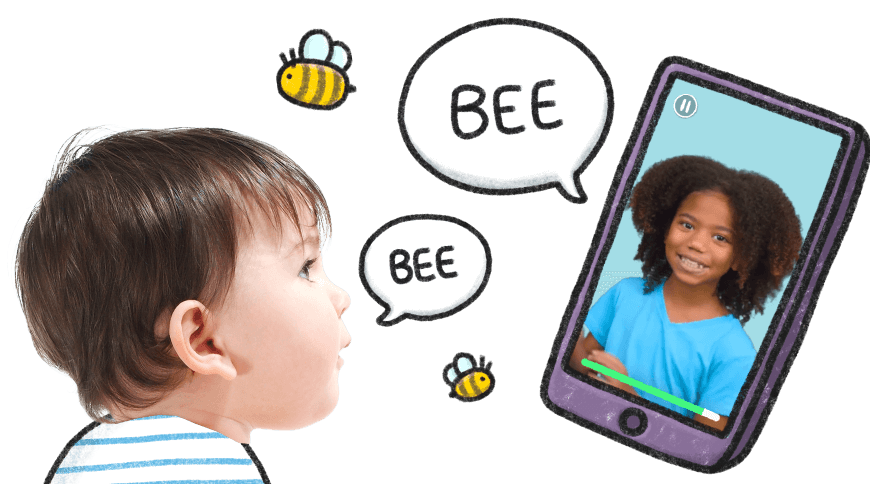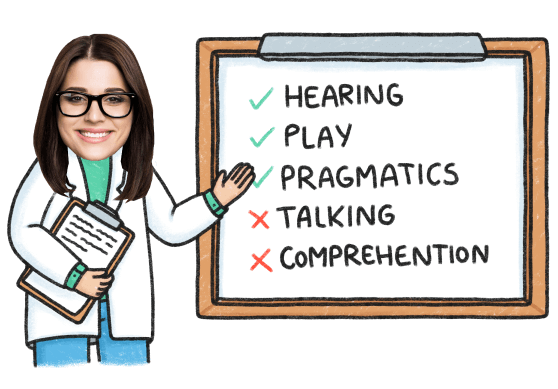Teaching Kids with Video Modeling
Feb 14, 2022 Video modeling (VM) is the main teaching method used in the Speech Blubs app. This blog will explain what it is, why it works, and if there is science that supports its use.
The beginnings of Video Modeling for Autism
Video modeling (VM) is a relatively recent phenomenon in teaching. Creer and Miklich’s study (1970) was the first to explore its use (we think). The website researchautism.net reports that “The first reported evidence for the use of video modeling as a treatment for a child with autism spectrum disorder was reported in 1982 by Steinborn and Knapp. They used a behavioral training program and a classroom-based model of a traffic environment to teach a child on the autism spectrum pedestrian skills.”
Since then, video modeling has been the go-to method for teaching social skills to kids with autism and speech delay.
The Discovery of Mirror Neurons
VM became even more popular with the discovery of ‘mirror neurons.’
The Harvard University journal, Science in the News published “in 1992, a team of neuroscientists led by Giacomo Rizzolatti . . . monitored the activity of neurons, the cells that constitute the smallest processing units of the brain, analogous to microchips in computers . . . Rizzolatti’s team, examining neurons . . . expected to find neurons that fired specifically when the monkey performed particular actions, such as reaching for or grabbing something . . . some of these neurons also fired when the monkey observed an experimenter performing the same action (in this case, bringing food to one’s mouth). In short: these neurons fired both when monkey see, and when monkey do.”

This article also says “they probably play a role in enabling imitation, given that there must be some mechanism in the brain that converts an observed action to a series of muscle commands.”
This was just the beginning of using mirror neurons to teach kids.
Boost Your Child’s Speech Development!
Improve language & communication skills with fun learning!

1 Discovery + 1 Method = SUCCESS
Combining mirror neurons and video modeling is an effective teaching method for children with autism and other kids who use Speech Blubs.
The app goes one step further and uses peer video modeling. Here a child models behaviors or skills like turn-taking, saying good morning, or brushing hair. Other skills that are common in speech therapy sessions include communication, social, behavior, daily living, and play skills. The child watches the peer in the video and then copies the behavior. The goal is the child improves that behavior or skill to have the confidence to perform it in real life.
Peer “Experts” Take It Even Further
Speech Blubs uses kid “experts” (or peers) to model behaviors because studies show that kids learn faster when using peer video modeling than when they see those same behaviors modeled by therapists in a therapy session (Charlop-Christy, Le, & Freeman, 2000). There’s just something more appealing and memorable about seeing other kids perform the behaviors that make kids improve faster. Speech Blubs uses this method in all of its activities and games.
Studies show that kids learn faster when using peer video modeling.
On the importance of video modeling, (Seok et al., 2018) concluded that “overall, an analysis of the eight studies revealed that VM can have a positive and significant effect” and that “. . . these findings suggest that VM is an effective evidence-based practice for students with emotional and behavioral disorders (EBD).”
Others Use this Teaching Strategy, Too!
Video modeling has become so popular that publishing companies are working hard to find and publish the latest studies. Check out: “Using an iPad-based Video Modeling Package to Teach Numeracy Skills to a Child with an ASD.”
If you click this link you will find an entire list of titles about VM, and that’s just one publisher!
So, now you know what video modeling is, gives its background, explains how it’s used for kids with speech delay and autism, and provides experts who recommend its use.
Speech Blubs is confident that the science behind our app holds up to scrutiny. Parents, we really do have your child’s best interests in mind.
